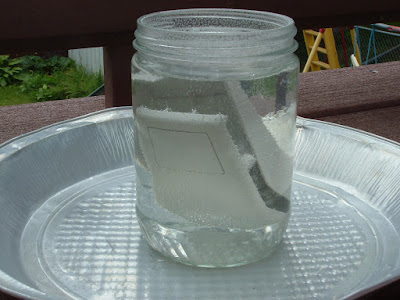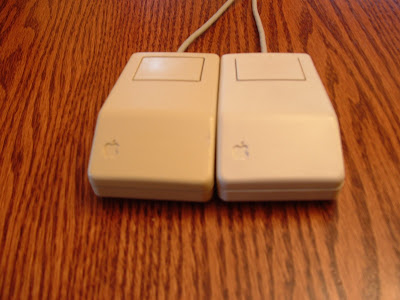OK, so your old Greyboy isn't grey anymore? Your C64 looks like it just exited the Cheetos factory? Atari ST got a nasty looking tinge of yellow? Chances are, any old plastic cases you have are beginning to turn yellow, or already are quite yellow indeed. The UV degrades the plastic, making it brown/yellow and ugly. BUT, it is reversible! And it's pretty easy to do, cheap, and (if you use your head) safe for the plastics.
You will need:
-hydrogen peroxide- the 3% concentration found at most drug stores is the kind you want. Don't use the stronger stuff used for bleaching hair, as it will destroy the plastic
-Oxi Clean cleaning powder, or something that works the same.
-a sunny spot outside
-a clear container big enough to hold the plastic pieces to be de-yellowed
-water
So, step 1 is to clean you plastic parts and take all electronic guts/whatever was in them out. If there are metal bits attached to the plastic case, those need to be removed. You don't want anything but plastic going in. So, screws, metal case badges, etc. should not go in. Also beware that the plastics will get wet, and the solution will probably break down adhesives, so remove labels etc. On the gameboy, it's probably best to remove the screen lens too. Did I say to clean them? Use soap and water and make sure all the soap is off before you put them in to the solution.
Step 2, place all plastic parts into the container. It doesn't matter if they're unequally yellowed or different colors (like a gameboy's case and buttons) just throw 'em all in. Then pour enough hydrogen peroxide over the parts to cover. If it doesn't quite cover them, you can add a little water. So long as it's still pretty much all hydrogen peroxide.
Step 3, place the container in the sunny spot, and add the Oxi Clean powder. I add about a tablespoon per gallon of liquid, use less if your batch is smaller. No mixing is required, the reaction is quite rapid. It will foam and fizz and eventually turn clear. At this point, just leave it for about 6-8 hours in the sun. The UV in the sun reacts with the Oxi and hydrogen peroxide, which liberate bromine atoms from the plastic. (the bromine is what makes the plastic yellow) It will make alot of bubbles the entire time it's exposed to sunlight.

http://picasaweb.google.com/lh/photo/Jz … directlink
Step 4, remove the plastic when it looks like the yellow is all gone. You might need to repeat the process with a fresh batch of solution if your plastic is really badly yellowed.
Lastly, wash your pieces again, and reassemble and enjoy that wonderful, non-yellow look! If you want to protect against future yellowing you should apply a plastic protection product like Armor All or 303 Aerospace Protectant.

http://picasaweb.google.com/lh/photo/fQ … directlink
Some notes:
-I have not noticed any fading of printed labels on things like Gameboys before, but sometimes stick-on labels will become bubbly or lift on the edges from being wet. Just so you know.
-Using higher concentrations of hydrogen peroxide or a ton of Oxi Clean can cause your plastics to be damaged. You have been warned.
-If you live in a part of the world where the sun is very hot, you should be careful it doesn't get hot enough to melt or deform your plastics. If you live in the desert, you might want to do this on a cloudy day, or inside under a UV lamp. I live in Minnesota, where it pretty much never gets very hot. I did this project on a partly cloudy day, with a little rain in the afternoon, so low levels of sun should not be an issue, you just might need more time in the sun.
-Finally, this process has been tested by me and I think it works reasonably well. But you should be careful all the same, and be aware that, just like working with Rit Dye, there is a possibility of wrecking your beloved greyboy case. But it worked for me, so you should have no problems with it.
AND as a final note, my method is derived from this sites method:
http://retr0bright.wikispaces.com/
I find my method to be cheaper, easier, and safer for the plastics, at the cost of a little more time being needed to remove the yellow.